Signetics TWIN
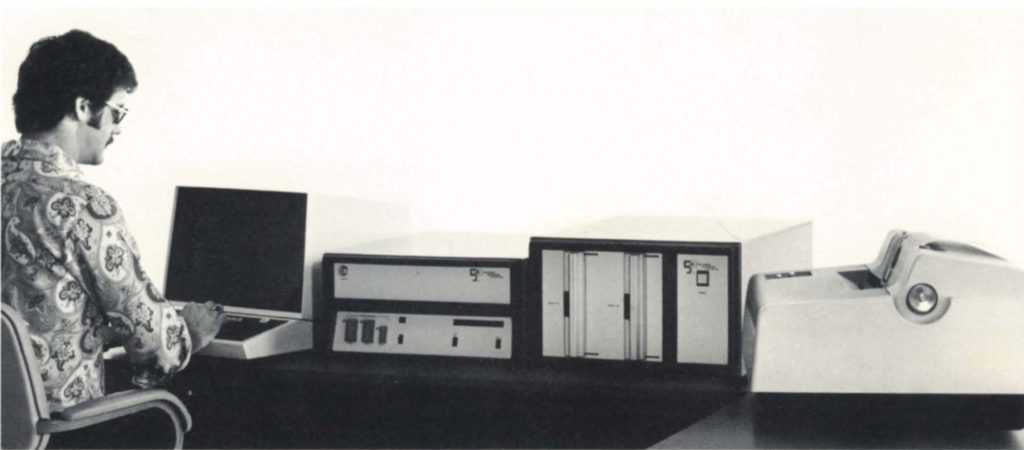
The TWIN is a rare minicomputer for development of microprocessor projects. It is based on the 2650 microprocessor as the main processor, but can have a number of secondary processors that can be a 2650 but can also be some other 8-bit microprocessors such as the 8080 or the 6800. TWIN stands for “Testware Instrument” but is also a play on the nature of the machines: the main processor and secondary processor share the same resources, like twins.
I am in the lucky position of having two TWINs: one on loan from the Eindhoven Computer Association (the “ECA system”) and one kindly donated by a private individual (the “HM system”). Both are approximately of the same age, but contain different cards in their main cabinet.
A full TWIN system consists of (left to right in the picture above):
Click the links for picture galleries and more information. The information on the floppy disk cabinet includes the disk layout. A separate page provides links to many disk images.
Operating System
The Signetics TWIN and related systems (see History below) all make use of a disk operating system. The DOS for the TWIN is called SDOS, for the Universal One it is called UDOS, the Tektronix system uses Tekdos. My guess is that the differences are minor. From what I have seen from the various descriptions and user manuals the commands appear to be mostly the same.
The ECA system came with a boot disk that contains a boot-file called SDOS, but curiously it announces itself as “TOS v1”. The HM system came with original disks for SDOS 2.0 and SDOS 4.0, as well as disks containing EXOS (you can download all disk images). EXOS was developed at Philips NatLab research and development lab, and was likely not made available commercially. The disk images at the computer museum of University Stuttgart contain SDOS version 4.2. Some differences become apparent on boot. TOS starts with a memory test and then prompts for the current date and time. (None of the systems contain a battery-backed clock). Date and time are optional, but if none are entered the clock interrupt is not started. The time-information is used in for example console messages. EXOS also does this, but omits the memory test. SDOS v4.2 does not keep a date and time and always enables clock interrupts. UDOS does the same, and has a CLOCK command to enable or disable the clock interrupts during operation. My guess is that the differences between the DOS’s are of the same magnitude as differences between versions of the same DOS. See the section on DOS internals for details.
History
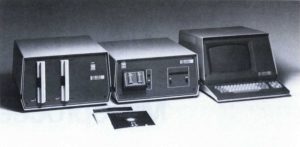
The system was developed for Signetics by Millennium Information Systems. It was introduced in 1976. Millennium at that time had already developed a dual floppy disk cabinet for use with the Intel Intellec-range of development computers. (This may also explain the whimsical misspelling of ‘intellegent disk controller’). That expertise may have been useful for the TWIN; the main cabinet was developed specifically for Signetics. Obviously the system used Signetics’ 2650 microprocessor. Millennium also marketed their own version of the system as Universal One at the same time. Except for logo’s on the cabinets and version strings in the software Universal One appears to be identical to the TWIN. In fact, when you look at the photos of the ECA main cabinet, you can see that the Signetics serial number sticker is pasted on top of the Millennium serial number! Millennium also offered a similar but smaller system as the Universal Emulator. The Emulator did not include the floppy disk cabinet, but stored its software in ROM.
The design of the TWIN is unique and very clever because it is a dual system: a main processor controls the system itself, and a secondary processor (the “slave” in parlance of that time) emulates the processor in the prototype under development. The system bus is divided into two sections, with a debug card in between to control access. Both processors have their own memory, but only the main processor can access the memory of the secondary processor. When the secondary processor crashes (as will happen when developing a prototype) the main processor is unaffected, and can inspect the secondary’s memory to see what went wrong. On the prototype board, the processor itself is removed, and replaced by a 40-pin plug that connects to the TWIN. The operator can now load software into the prototype from the TWIN, run it, set breakpoints, inspect memory and register values, etc. Furthermore, the TWIN can contain up to four different secondary processors, to support the development of many different prototypes. Millennium announced boards for the 8080 or the 6800. Although the 2650 has an 8-bit databus and is limited to 32 Kbyte of memory, the TWIN supports 16-bit secondary processors that can access up to 64 Kbyte of memory.
The Universal One quickly drew the attention of Tektronix, a well-known maker of oscilloscopes and other test equipment. In 1977 a deal was announced between the two companies. Tektronix would invest in further development of the system, and at least one Tektronix engineer was working at Millennium for some time. As a first visible result of this cooperation the system was re-branded as the Tektronix 8002. A later update with expanded memory was sold as the 8002A. Tektronix made true on their promise to continue development, and eventually supported a long list of microprocessors for development, including the Intel 8080/8085 and 8080A/8085A, Motorola 6800/6802, Texas Instruments TMS9900, Zilog Z80/Z80A, Mostek 3870/3872 and Fairchild F8, RCA 1802, and 6500/1 microcomputer. The 2650 is strangely missing from that list although a card was readily available (it was used for the TWIN). Perhaps there were contractual limitations, for the 2650 was still actively used at that time.
Tektronix released an update model, the 8550 Microcomputer Development Lab, that used the faster 2650A-1 processor. Although the 2650 still operated as the main processor many functions were performed by auxiliary processors, such as the Z80 and the DEC LSI-11/2.
First impressions
The components are solidly built (steel, no plastic) and are incredibly heavy, mainly because of the massive transformers for the (linear) power supplies.
When I got the ECA system there was some external damage: broken toggle switches and fuse holders. These were easily repaired. Exactly the same toggle switches can still be bought from electronics parts shops today. The power supplies of the terminal and the main cabinet contained faulty capacitors. These were also replaced. Booting the system initially did not work. It turned out that the DIP switches on two of the memory cards were set to the same value. After correcting that the terminal did show signs of life. A bit of experimenting showed that the baud rate must be set to 1200. And then… success!
The HM system I obtained a little later was in a better condition, although the power supplies needed some attention as well. The HM system came with an extensive set of documentation and a number of diskettes.
Both printers needed a lot of work as well, but have since been restored to working order.
Some information on this system can be found on internet. 8 inch floppies are rare, but I managed to buy a box of 10 diskettes, brand new and still sealed. This after I learned the hard way that soft-sectored diskettes are really incompatible with the disk controller; it requires hard-sectored diskettes.
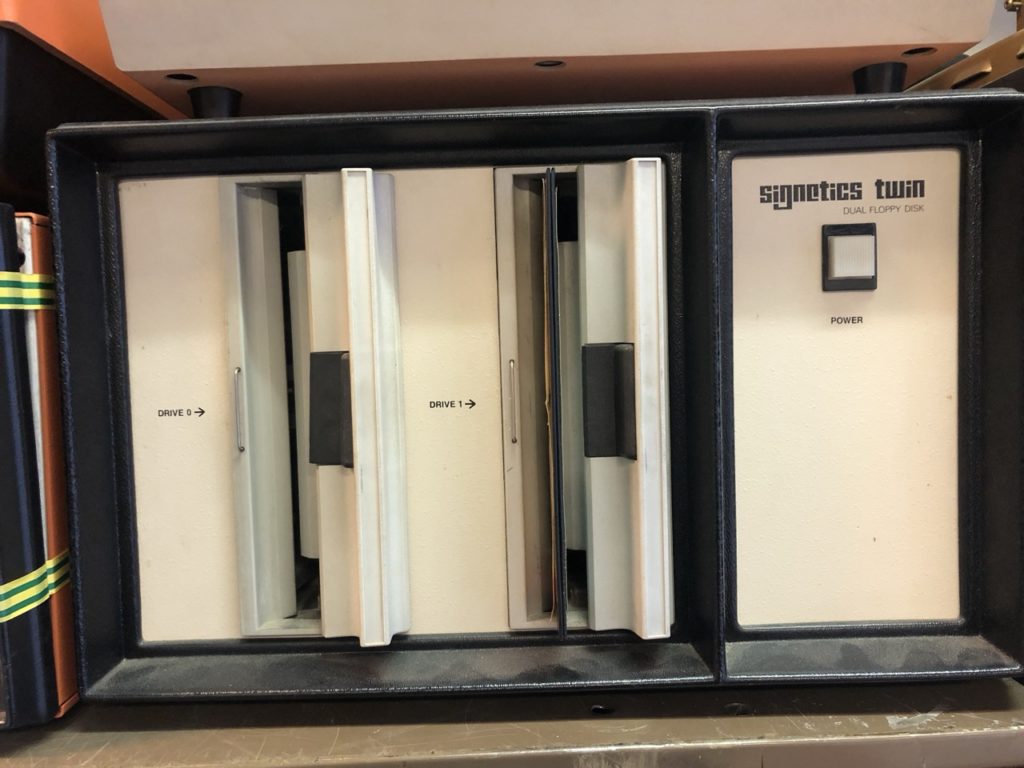
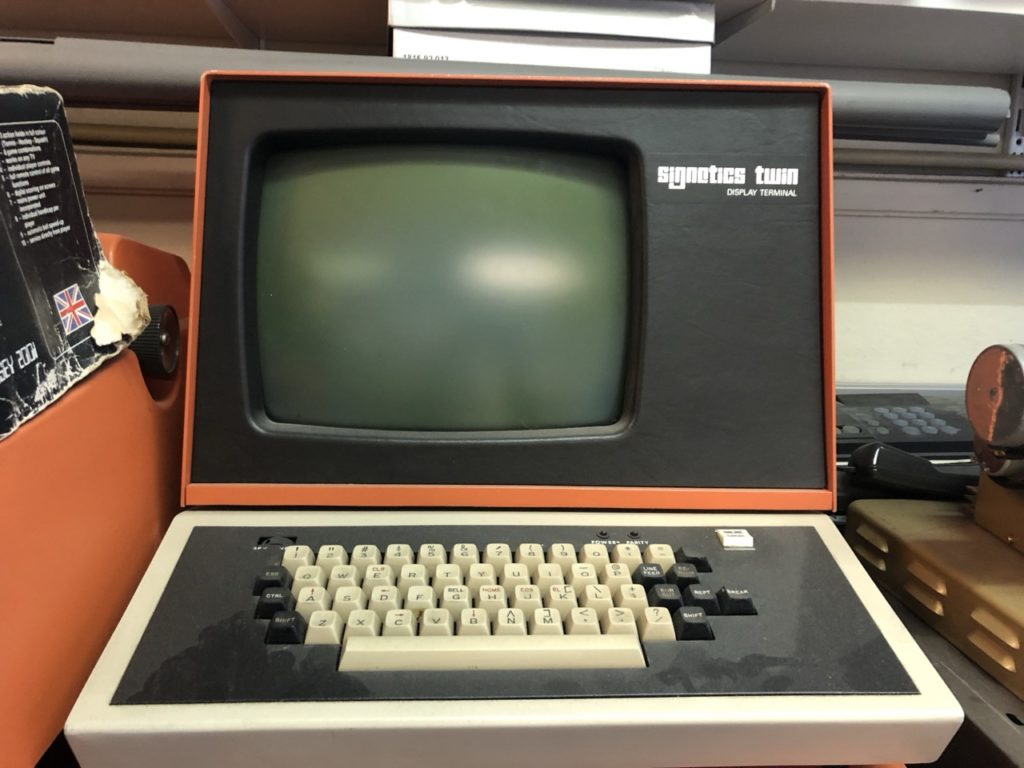
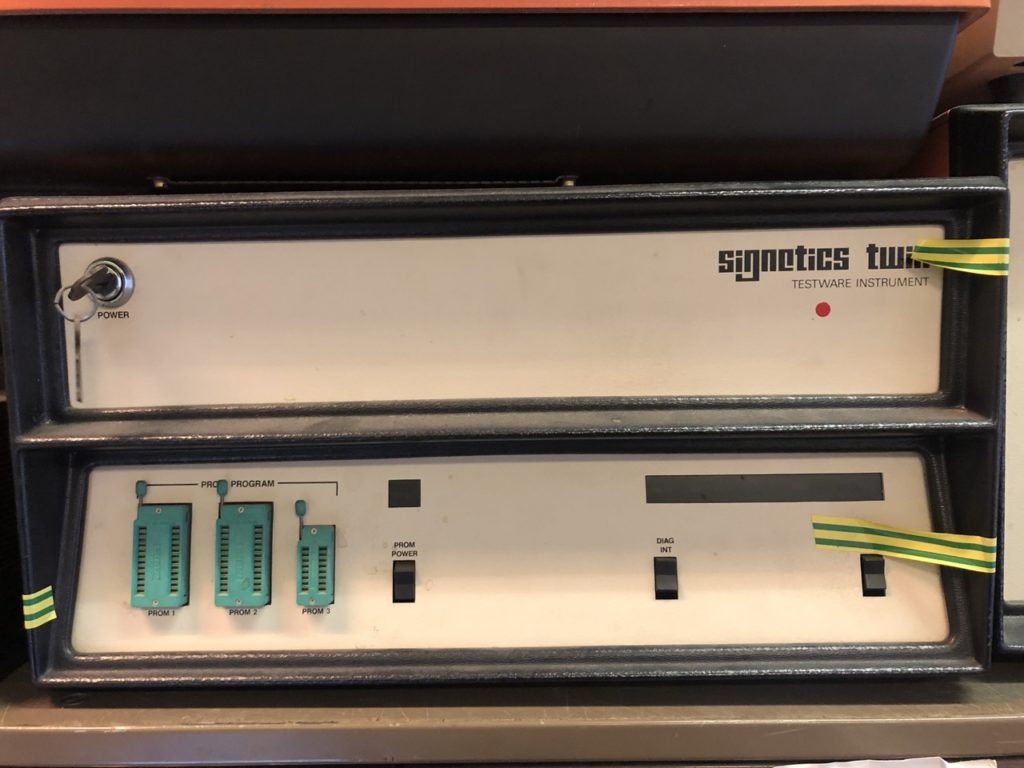
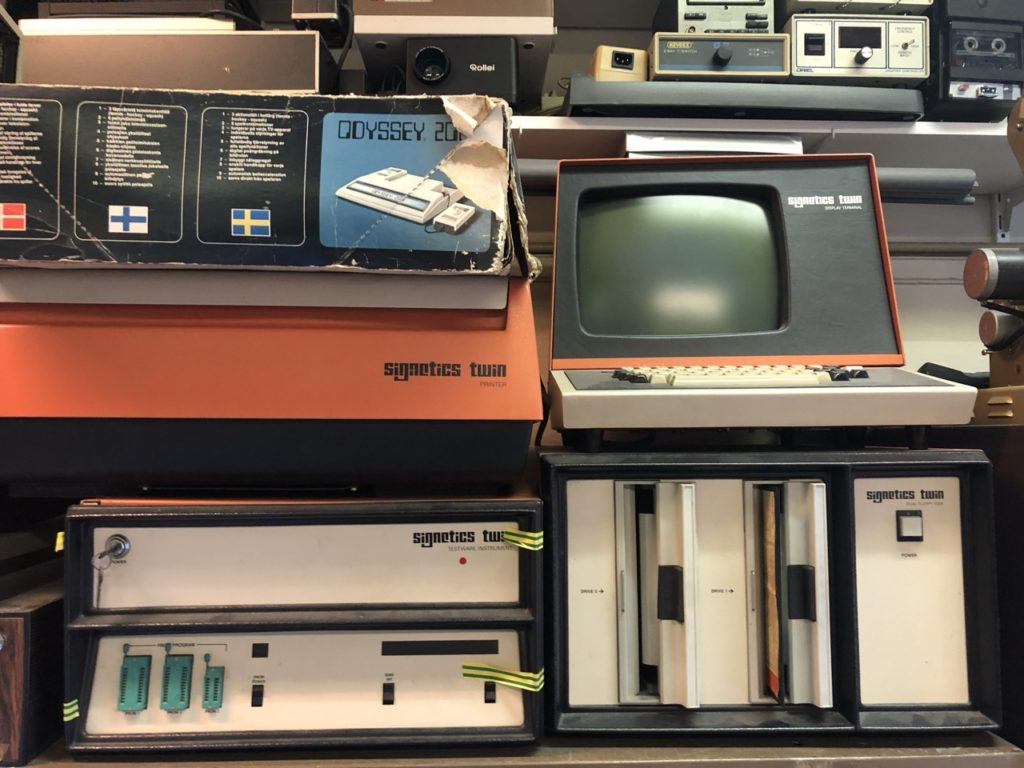
Amigan Software have a TWIN Emulator for Windows. Currently still ‘work in progress’, but very useful.
Most information is now on the Documentation page.
Information on the Signetics TWIN or the Millenium Universal One:
Computermuseum der Stuttgarter Informatik (FTP): the Valvo booklet and floppy disk images.
Information on the Tektronix 8002A:
8002 on Tekwiki: extensive information and manuals for download.
Disk images on Bitsavers: several disk images of floppy disks.
Manuals on Bitsavers: many PDF documents.
